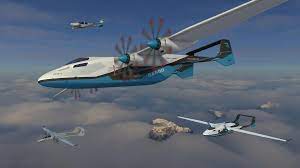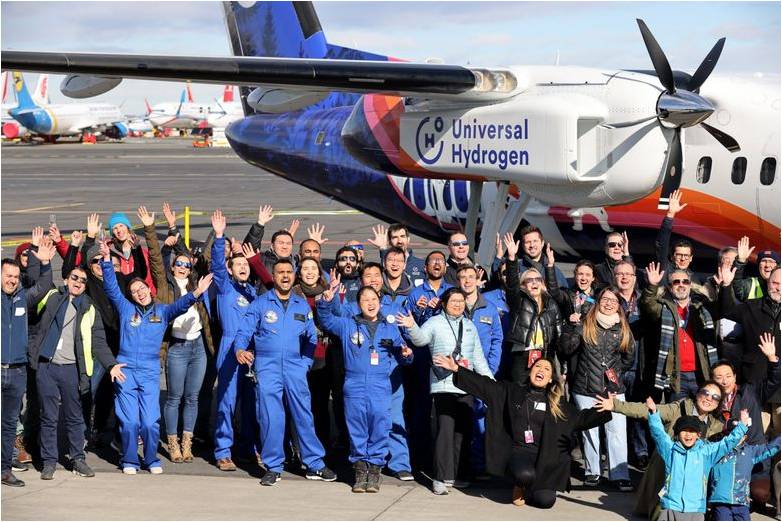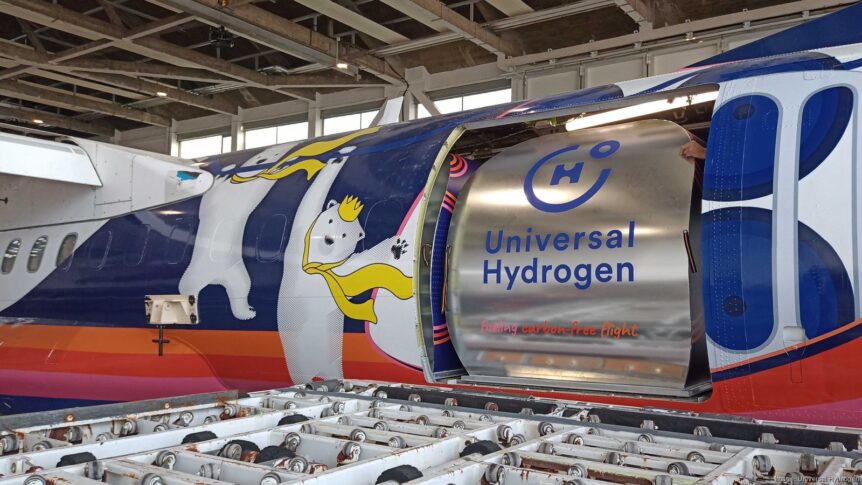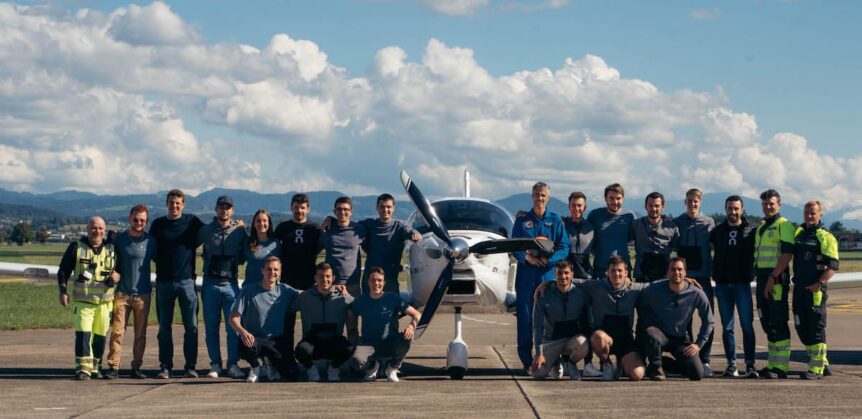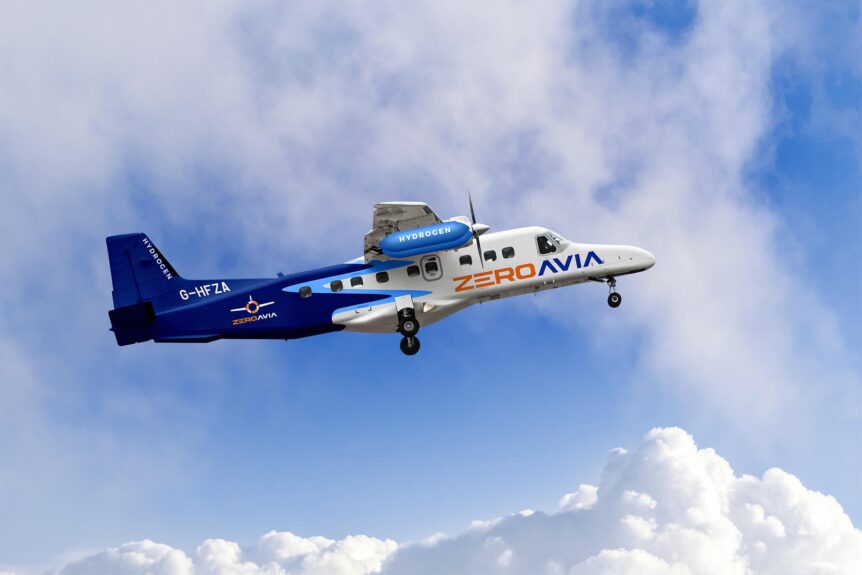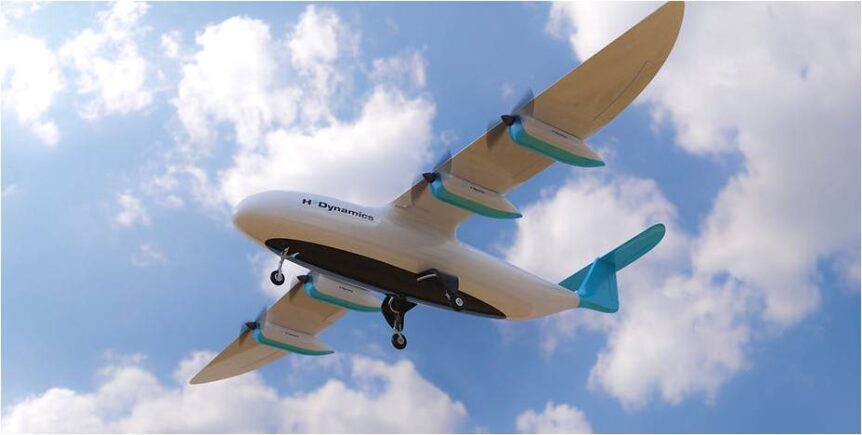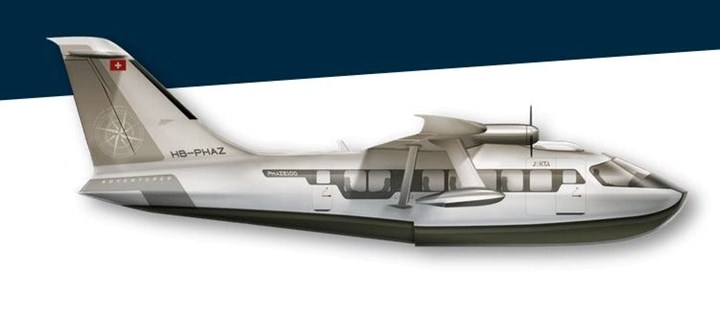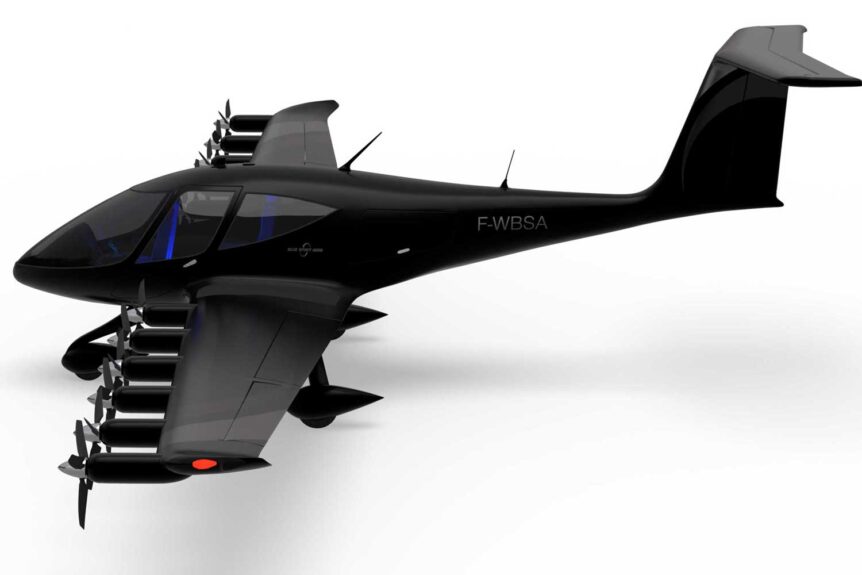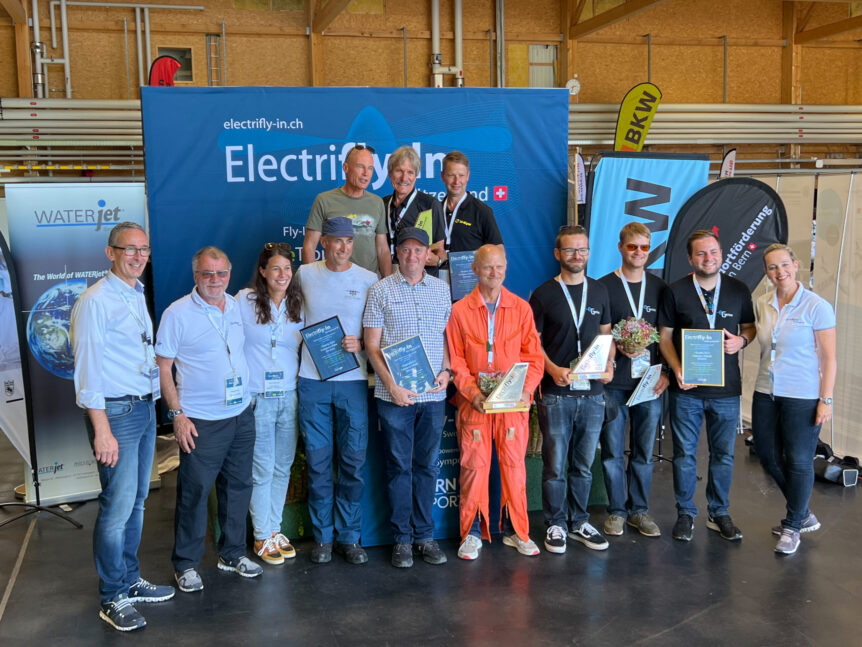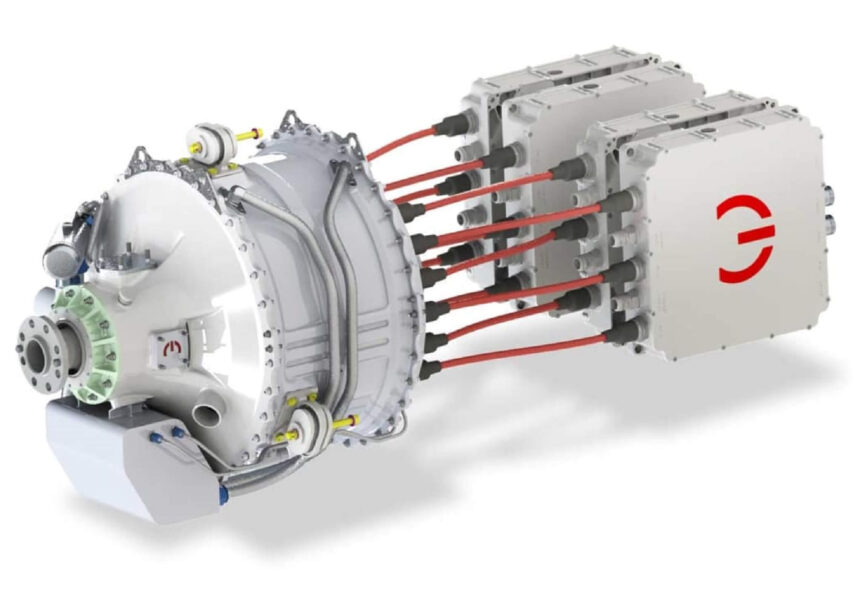Designs to Fly “Without Harm for the Climate” APUS (Latin for swift bird) has announced two aircraft, the i-2 and i-5, that will offer either zero emission or very low emission flight. The designs represent some highly innovative thinking and excellent performance. APUS states its mission as, “Flying without any Harm for Climate!” To that end, they are developing four craft that will fly on green hydrogen power. Partnered with, “PowerCell (Hydrogen Fuel Cells), Fraunhofer (High-Voltage applications), COTESA (hydrogen storage solutions) and HEGGEMANN (hydrogen supply and safety systems) we are developing certified powertrain units for emission-free air transportation applications.” APUS i-2, Zero-Emission General Aviation Aircraft In a recent discussion with CEO Dipl.-Ing.Phillip Scheffel; Laurent Altenberger ,an Aerospace Project and Supply Chain Management Consultant in Business Development; and Dipl.-Ing. Robert Adam, a company co-founder and head of powertrain development, your editor learned how committed APUS is in the matter of promoting environmentally friendly flight. APUS itself goes back to the 2011 …
Biggest yet from Universal Hydrogen
Universal Hydrogen flew the largest hydrogen-powered aircraft yet at Grant County Airport in Moses Lake, Washington. The DeHavilland Dash 8 was powered on its right side by a MagniX motor and fueled by H2 from a pair of containers in the rear of the fuselage. It made a 15 minute flight to 3,500 feet and settled back to a safe landing It carried “the largest hydrogen fuel cell ever to power an aircraft, “and Universal Hydrogen co-founder and CEO Paul Eremenko “declared the moment the dawn of a new golden age of aviation.” Prep for flight Lightning McClean, Universal’s modified Dash 8, normally flies with up to 50 passengers. The penalty for using H2 for fuel is giving up 10 of those revenue-producing seats, Universal’s Plug Power containers taking up the back rows of the cabin. Other gear included a rigorous evaluation of every component and system, the Dash 8 was ready for taxiing and test flights. Two large hydrogen …
Universal Hydrogen Certified, Ready to Fly
On February 7, 2023, Universal Hydrogen received a Special Airworthiness Certificate in the Experimental category from the Federal Aviation Administration. This will allow their DeHavilland Dash 8-300 to begin test flights. Universal boasts their craft will be the largest hydrogen fuel cell-powered aircraft ever to fly. Up to now, it’s been performing taxi tests and motor runups, getting ready for the big day. On a Mission Universal Hydrogen’s web site opens with this statement: “Our mission is to put aviation on a trajectory to meet Paris Agreement emissions targets by making hydrogen-powered commercial flight a near-term reality.” The coming flight tests are a major step toward fulfillment of that mission. Inclusion of the large hydrogen-carrying modules reduces passenger carrying capacity to 40 seats. But, the modules allow easy loading and unloading and “eliminate the need for costly new infrastructure, with any airport capable of handling cargo being hydrogen-ready.” Paul Eremenko, co-founder and CEO of Universal Hydrogen, explains, “We are simultaneously …
AeroDelft and ETH Cellsius’ Future Flies in Clean Skies
Two groups of students, AeroDelft in The Netherlands and ETH Cellsius in Switzerland, are making great progress on some extremely advanced aeronautical projects. Each school’s ultimate goal seems to be flying with liquid hydrogen, and each has a slightly different approach to that goal. AeroDelft: Starting Small AeroDelft, the student-led project at Delft University of Technology, flew a 1/3 scale model that closely resembles e-Genius in July. Its 1,500 Watt (two kilowatt) motor is powered by 40 grams (1.411 ounces) of gaseous hydrogen initially, but will transition to liquid H2 later in the program. 380 grams (13.4 ounces) of the more potent fuel will allow three hours endurance and a range of almost 300 kilometers (186 miles) Since that flight, the team has exhibited at various trade shows and advanced work on its Sling 4 two-seat light aircraft. The 920 kilogram (2,024 pound) maximum takeoff weight aircraft, powered by a 110 kilowatt (147.4 horsepower) motor flies on battery power for …
ZeroAvia Flies Dornier 228 on Left-Wing Hydrogen
Stephen Bridgewater made a quick announcement on ZeroAvia’s Twitter feed Thursday January 19 about a Dornier 228 that flew with a hydrogen-powered motor on its left wing. ZeroAvia continues making the largest-yet H2 flights. ZeroAvia’s 19-seat Do228 flew today (from Kemble) at 13.35 UK time. It’s the largest hydrogen-electric powered aircraft yet to fly (hydrogen-electric engine on left wing and Honeywell TPE-331 on the right). This comes a year after the firm started modifications to the twin-engine Dornier aircraft in both England and California, and a little over two years since it flew a Piper Malibu first on batteries, and then hydrogen. Despite a crash landing that ended the Cranfield, England-based Malibu, ZeroAvia has stuck to its ambitious schedule. Another Piper Malibu continued testing at Hollister, California, part of the company’s efforts toward achieving both English and American certification. Performing engine tests early last years and following up with taxi tests at increasing speeds, ZeroAvia made a 10-minute airport circuit …
H3 Dynamics and Its Hydrogen-Electric Nacelle
H3 Dynamics (formerly HES – Horizon Energy Systems) has flown a small example of its hydrogen-electric nacelle that could power many craft now in the concept phase. H3 headlines its web page with the words, “Dreaming Big,” followed by the premise, “The future of aviation is hydrogen-electric, autonomous, and digital.” Their press release declares, “The future of hydrogen aviation powered by H3 Dynamics’ distributed hydrogen propulsion nacelles has taken flight for the very first time in France.” Hydrogen could be a dream fuel, clean burning and leaving only a little water vapor in its wake. It has a few drawbacks, though. H2 takes up four times the space of gasoline or kerosene for a roughly equivalent amount of energy. In something sizeable like a semi-truck or a seagoing ship, such space requirements can be accommodated. Airplanes need to be streamlined and svelte, so trying to carry enough energy for long ranges and endurance can spoil otherwise beautiful lines. H3 claims its …
Jekta’s Amphibious Commuter Liner
Jekta’s amphibious commuter liner made its debut at the Abu Dhabi Air Expo 2022. The 10-motor amphibious, 19-passsenger craft could become a familiar sight at coastal landings around the world based on initial interest. Deena Kamel, reporting for The National News, revealed PHA-ZE 100, short for Passenger Hydro Aircraft Zero Emissions, is now in its design stage, “with a prototype scheduled for 2026 before entry into market by 2028,” according to Jekta CEO George Alafinov. Intended to transport people in mega-cities and coastal areas “sustainably and affordably,” according to the article, the 19-passenger is a response to a “world population with an appetite to travel safely, cheaply and ecologically.” Mr. Alafinov makes the case for amphibious craft. “The solution is in front of us: Instead of building airports with devastating irreversible environmental impact, we can use nature’s gift of oceans, lakes and rivers to create an affordable transport system using amphibian aviation.” Further making his case, he added, “Today’s seaplane …
Hydrogen Capsules for Swappable Energy
Hydrogen capsules, quickly swappable and motor pods easily switched on a long wing share a common theme. H2-Mobile, a French web site, shared three stories that share forms of encapsulation, one pointing back to a story your editor wrote about a decade ago. An HUV (Hydrogen Utility Vehicle) from NamX A French-Moroccan company, NamX showed a car co-developed with Pininfarina, and the sleek sedan reportedly can hit 294 kilometers per hour (182 mph) and accelerate from zero to 100 kilometers per hour (62 mph) in 4.3 seconds. Most surprising, perhaps is the car’s method of storing energy. Michael Torregrossa, writing in H2-Mobile, reports that, “Present for the first time at the Paris Motor Show, NamX lifts the veil on its NAMX hydrogen capsule distribution device. Called CapXtores, this new network will begin its deployments in 2024.” Seemingly a larger version of a capsule battery distribution system created for Gogoro, a Taiwanese scooter manufacturer, the NamX concept car can be refueled …
Electrifly-In Bern 2022 – The Year of the Hybrid
Electrifly-In Bern 2022 is a new location after five years at Grenchen, Switzerland. The Electrifly-In moved about 25 miles down the road to Bern’s bigger airport. Started by the designers of the SmartFlyer, an innovative hybrid touring craft, the event was originally called the SmartFlyer Challenge. Organizers have the serious intent of saving aviation from the “shame” that has come to accompany flight itself. “Aviation is pilloried by the public. Flying is seen as the main problem of the climate catastrophe and everyone who books a flight should have a guilty conscience and is labeled as a climate sinner. The social and political pressure to phase out combustion technology is steadily increasing worldwide. So the question is no longer if, but when electrically powered aircraft will become the norm.” This year, the fly-in offered the public several defenses against sin and shame. Beginning with the original namesake, the Smartflyer SFX1 was on display in the hangar, its carbon-fiber blackness showing …
MagniX Ready for New Markets
MagniX, the motor company powering Eviation’s Alice and Harbour Air’s Beaver, is expanding into new markets. Already flying in a DeHavilland Beaver in Canada and being readied for flight on Eviation’s Alice in Arlington, Washington, the company’s motors have many potential airframes to grace. Besides Harbour Air and Eviation, English firm Faradair has chosen MagniX to power its BEHA, a triplane configuration commuter, and Sydney Seaplanes wants MagniX power for its Cessna Caravan Supplemental Type Certificate. On a grander scale, Universal Hydrogen will power its converted DeHavilland Dash 8s with MagniX. Even NASA has awarded funding to MagniX (along with General Electric) to develop “Electrified Aircraft Propulsion (EAP) technologies through ground and flight demonstrations. “ Harbour Air’s Beaver A 1957 de Havilland of Canada Beaver, C-FJOS, had its original Pratt & Whitney P-985 Wasp Junior radial piston engine replaced with a Magnix 750hp (559kW) Magni500 electric powerplant. It first flew on electric power on December 10, 2019. On August 19, …

